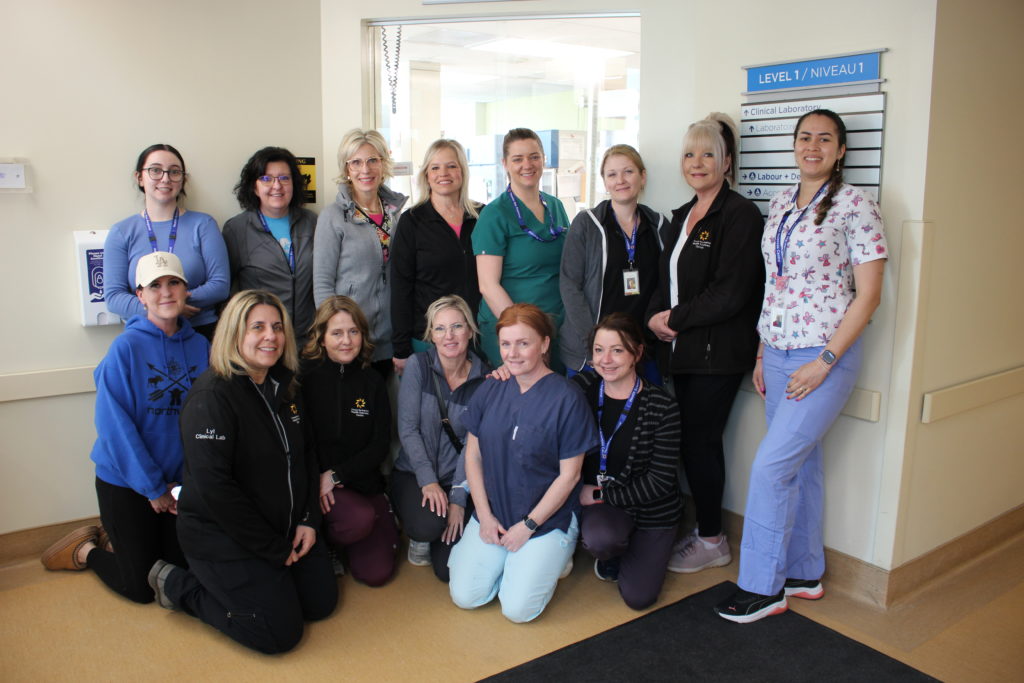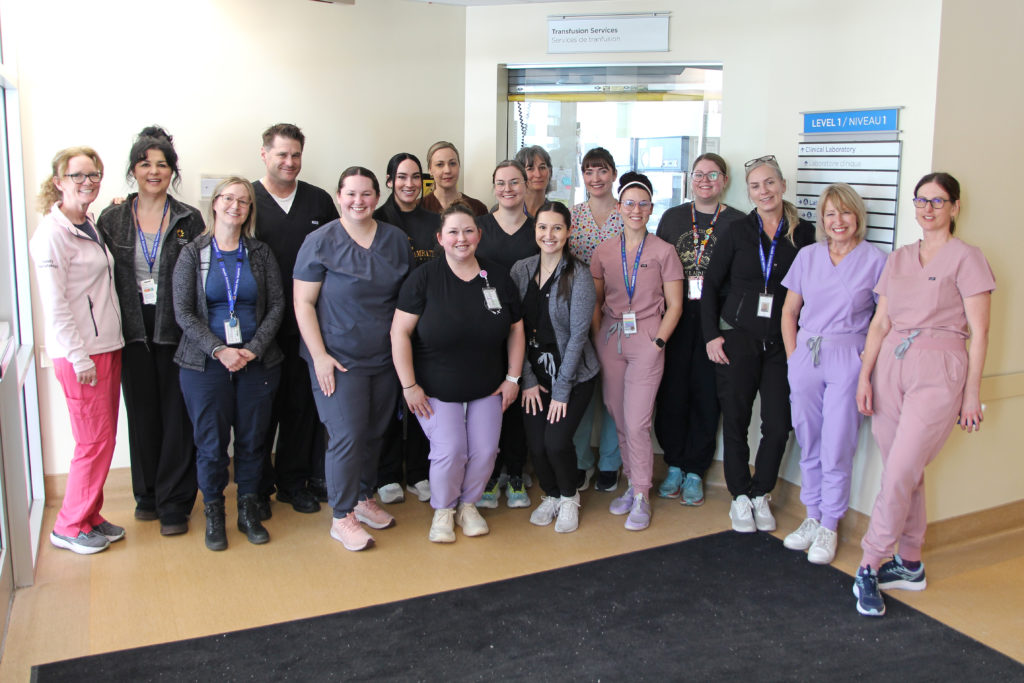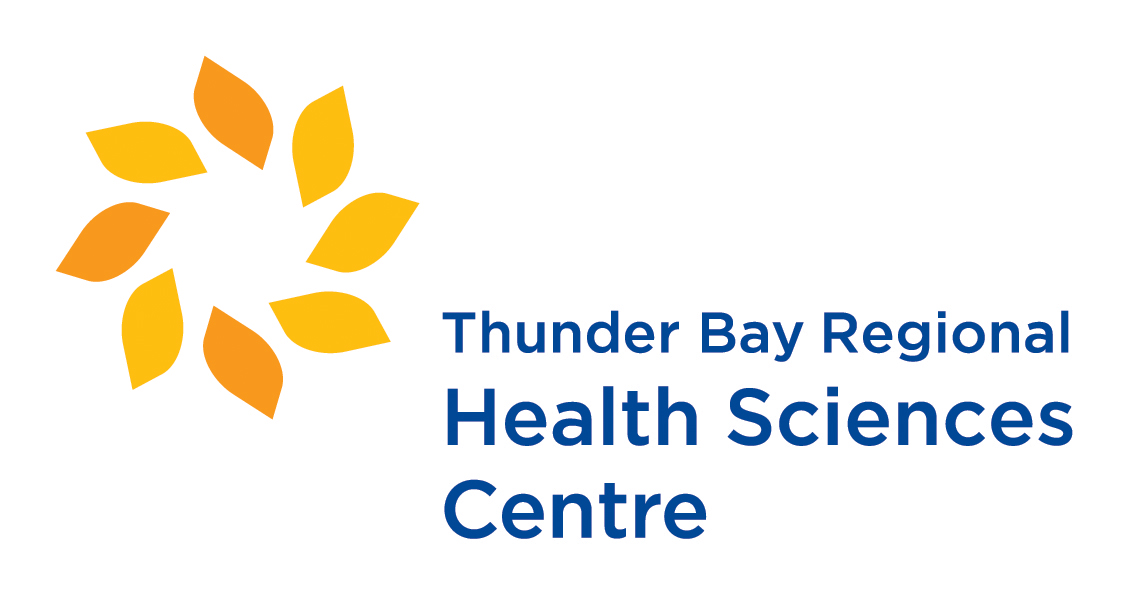

Join us in celebrating Medical Laboratory Week (April 13-19).
Medical Laboratory professionals at Thunder Bay Regional Health Sciences Centre (TBRHSC) work tirelessly 24/7/365 to support our Hospital’s programs and services by providing quality results for timely diagnosis and treatment. Caring for patients and families of Northwestern Ontario is their number one priority.
The team is comprised of Pathologists, Medical Laboratory Technologists (MLTs – regulated), Medical Laboratory Assistants (MLAs – includes Phlebotomists), Diagnostic Cytotechnologists (DCTs), Pathologist’s Assistants (PAs), leadership staff and clerical staff. All play a vital role in patient care. Go to the following link on the Intranet where you will find a wealth of information: https://informed.tbrhsc.net/departments/laboratory-services
Did You Know?
- Diagnosis and treatment decisions are based on laboratory results.
- TBRHSC’s Lab performs 7,300 tests per day.
- There are over 1,000 blood collections (phlebotomy procedures) performed daily. This does not include Point of Care Testing (POCT) interventions.
- TBRHSC has approximately 170 laboratory staff.
- TBRHSC’s Lab has over 3,000 individual document-controlled policies and procedures.
TBRHSC’s Lab has 10 separate department specializations:
𝟭. Laboratory Administration
Oversight of laboratory staff and activity (Medical Director, Medical Scientific staff, i.e., PhD Biochemist, Medical Microbiologist, etc.), Technical Director/Manager, Coordinators, Administrative Assistant, Clerical Staff)
2. Biochemistry (Clinical Chemistry)
Large array of tests involving the measurement of chemical constituents in blood and body fluids to evaluate organ function, toxicology, therapeutic drug monitoring, and to detect chemicals, endocrinology and other special tests.
3. Haematology (including Flow Cytometry)
Haematology: Study of cells e.g. red blood cells, white blood cells and platelets as well as bleeding disorders/coagulation.
Flow Cytometry: The study of bone marrows, lymph node/tissue specimens for lymphoma and leukemia.
4. Transfusion Medicine/Services
The testing for blood types, antibody detection, and compatibility testing (perinatal/neonatal and blood components). Also called Immunohaematology or Blood Banking.
5. Microbiology
The study of microorganisms, including bacteria, fungi, viruses, and parasites.
𝟲. Pathology (includes Histology, Grossing Room, Autopsy, Cytology & the Pathology Office)
Histology: The preparation and study of tissue specimens.
Grossing Room: all surgical specimens, i.e., breast, lung, prostate, etc. are sent here for processing
Autopsy: post mortem analysis to determine cause of death
Cytology: The study of ‘free’ cells, their origin, structure, function, and pathology.
Pathology Office: Cancer, etc. reporting, Customer service (point of contact), etc.
7. Point of Care Testing (POCT)
Oversight of bedside testing i.e., glucometer, iSTATs, etc. There are over 3,000 end users of POCT equipment which much be maintained with ongoing competency assessment
8. Specimen Procurement and Dispatch
Blood Collection/Procurement: Blood draws and phlebotomy (venous, capillary (heel & finger tip)
Specimen Dispatch: Sample send out with adherence to Transportation of Dangerous Goods licensing/regulations; Thousands of specimens are sent out daily via land and air courier to over 53 reference laboratories across the world, including Germany.
9. Quality and Safety
Licensing, accreditation, Staff Safety/OHS, Patient Safety Repots, Biosecurity Containment Level II (Biosafety), Quality improvements, Root Cause Analysis, Risk Assessment, Staff Education, Acadmic Placements (MLT & MLA), Internal Audits, etc.
10. Client Services
Laboratory Services is complex and must ensure compliance to the Laboratory Licensing Act where the role of the Lab Director is outlined and delegated directly from the CEO. Legal aspects of the lab are many. In addition to this, there are many robust contracts in place.
